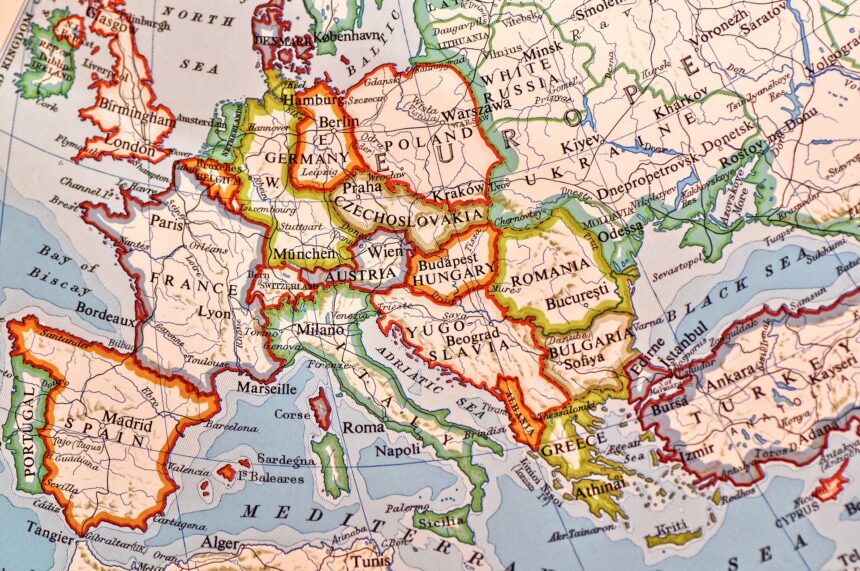In an age where geographic information systems (GIS) play an increasingly crucial role across various fields—ranging from urban planning to environmental management—having a well-rounded understanding of GIS concepts and practices is more important than ever. One resource that stands out for those seeking knowledge in this area is the GIS Body of Knowledge (GIS BoK) available at /gistbok.ucgis.org. This comprehensive guide provides a foundational overview of GIS, its applications, and best practices, making it an invaluable tool for students, professionals, and educators alike.
What is the GIS Body of Knowledge?
The /gistbok.ucgis.org is a collaborative effort initiated by the University Consortium for Geographic Information Science (UCGIS). This resource aims to define and organize the knowledge necessary for effective GIS practice and education. It serves as a blueprint for understanding the core principles, technologies, and methodologies that underpin GIS.
Key Objectives of the GIS BoK
- Standardization: The GIS BoK seeks to standardize the educational and professional practices within the GIS community, ensuring that all practitioners have a common understanding of essential concepts.
- Curriculum Development: It serves as a guide for developing academic curricula and professional training programs in GIS, helping educators align their offerings with industry needs.
- Resource for Professionals: The GIS BoK provides practitioners with up-to-date information on GIS technologies, methods, and applications, enabling them to remain competitive in a rapidly evolving field.
- Facilitating Communication: By establishing a common language and framework, the GIS BoK fosters communication and collaboration among GIS professionals, researchers, and educators.
Structure of the GIS Body of Knowledge
The GIS BoK is organized into several key domains, each encompassing various topics and subtopics. Here’s a breakdown of these domains:
1. Fundamental Concepts
This domain introduces basic concepts such as:
- Geospatial Data: Types of data (vector, raster), data models, and metadata.
- GIS Analysis: Spatial analysis techniques, modeling, and decision-making processes.
- Cartography and Visualization: Principles of map design, visualization techniques, and effective communication of geographic information.
2. Geospatial Technologies
This section covers various technologies that are integral to GIS, including:
- GIS Software: Overview of popular GIS software platforms (ArcGIS, QGIS, etc.).
- Remote Sensing: Principles of remote sensing, types of sensors, and applications in GIS.
- Global Positioning Systems (GPS): How GPS works and its role in data collection and analysis.
3. Applications of GIS
The GIS BoK also delves into the various applications of GIS across multiple sectors, such as:
- Urban Planning: Land use planning, transportation systems, and infrastructure development.
- Environmental Management: Conservation efforts, resource management, and impact assessments.
- Public Health: Disease mapping, health service accessibility, and environmental health studies.
4. Professional Practices
This domain highlights best practices for GIS professionals, including:
- Project Management: Strategies for effective project planning, implementation, and evaluation.
- Ethics in GIS: Ethical considerations and responsibilities when handling geospatial data.
- Collaboration and Communication: Techniques for effective teamwork and stakeholder engagement.

Benefits of Using the GIS Body of Knowledge
1. Enhanced Understanding
For students and newcomers to GIS, the GIS BoK offers a structured and comprehensive introduction to the field, enabling them to grasp fundamental concepts quickly.
2. Resource for Educators
Educators can utilize the GIS BoK to design curriculum that is aligned with industry standards, ensuring that students receive relevant and applicable knowledge.
3. Professional Development
For practicing GIS professionals, the GIS BoK serves as a valuable reference tool for staying informed about the latest trends, technologies, and best practices in the field.
4. Networking Opportunities
By engaging with the GIS BoK community, users can connect with fellow GIS enthusiasts, professionals, and educators, fostering a collaborative learning environment.
How to Access the GIS Body of Knowledge
Accessing the GIS Body of Knowledge is straightforward. You can visit gistbok.ucgis.org to explore the various domains, read in-depth articles, and utilize additional resources. The website is designed to be user-friendly, with navigation tools that help you quickly find the information you need.
Tips for Navigating the GIS BoK
- Use the Search Function: If you’re looking for specific topics, use the search feature to locate relevant information quickly.
- Explore the Glossary: The GIS BoK includes a glossary of terms that can be particularly helpful for beginners trying to familiarize themselves with GIS jargon.
- Download Resources: Take advantage of downloadable resources and guides that can enhance your understanding and practice of GIS.
- Stay Updated: The GIS BoK is regularly updated with new information and resources. Check back frequently to stay informed about the latest developments in GIS.
Conclusion
The GIS Body of Knowledge at /gistbok.ucgis.org is an essential resource for anyone interested in the field of Geographic Information Science. Whether you are a student, educator, or professional, this comprehensive guide provides the foundational knowledge and resources necessary to navigate the complexities of GIS. By leveraging the information available in the GIS BoK, you can enhance your understanding, develop your skills, and contribute meaningfully to the vibrant world of geospatial science.
FAQs About /Gistbok.ucgis.Org
What is the GIS Body of Knowledge?
The GIS Body of Knowledge (GIS BoK) is a comprehensive resource created by the University Consortium for Geographic Information Science (UCGIS) that outlines essential concepts, practices, and applications in Geographic Information Science (GIS).
Who can benefit from the GIS BoK?
Students, educators, researchers, and professionals in the field of GIS can all benefit from the GIS BoK. It serves as a foundational resource for learning and teaching GIS concepts.
What topics are covered in the GIS BoK?
The GIS BoK covers a range of topics including fundamental concepts, geospatial technologies, applications of GIS in various sectors, and professional practices for GIS practitioners.
Is the GIS BoK accessible for free?
Yes, the GIS BoK is freely accessible to anyone interested in learning about GIS. Users can explore the content online without any fees.
How can educators use the GIS BoK?
Educators can use the GIS BoK to develop curricula that align with industry standards, ensuring that students learn relevant skills and knowledge.







